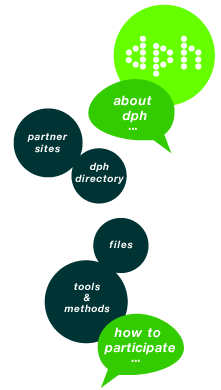Women in India’s artisanal fishing communities do not usually catch fish, but they do just about everything else related to fishing-net-making, processing, gutting, drying, smoking and marketing. Many of them also work as petty fish traders.
Petty fish traders are often seen as a homogenous group. In reality, however, there are considerable variations in the socio-economic status of the petty fish traders. Recognising these differences, ROSA, an NGO working in the Nagapattinam district of Tamil Nadu, has classified petty fish traders into three categories on the basis of the value of their transactions, the markets accessed, type of assets possessed and their status within the household and the community.
The first category comprises the vast majority. These women usually belong to nuclear households. They are the have-nots of the community, with few material possessions, a low social status and little decision-making power within the household.
They usually buy low-value fish, like sardines and mackerels, from catamarans and engage in door-to-door sale. Their turnover is typically between Rs 100 to Rs 750. They carry fish on their heads to households located in surrounding villages within a 25-km radius. The physical work is heavy, competition is high and profit margins are low.
The fish is usually procured on credit, either from the auctioneer or from friends and relatives. The auctioneer is repaid at the end of the day-no interest is charged. Friends or relatives can be repaid over two or three days, but the interest is as high as 120 per cent. The women have to care for their small children, with little help from the family. Most often, husbands work as crewmembers on fishing vessels, with low earnings, and women’s earnings are needed to keep the kitchen fires burning. The second category of petty fish traders usually deals with
high-value species, such as prawns and seer fish. They also procure sardines, mackerels and clupeids, when in season, but handle much larger quantities. Their turnover is usually between Rs 1,000 to Rs 10,000 per day.
These women get fish from both traditional craft and from trawlers. Most often, to ensure a regular supply of fish, they advance credit to the auctioneers at the landing sites.
The capital they use is either their own or borrowed. Traders belonging to this category are usually considered creditworthy. Hence, they are better placed to bargain for lower interest rates.
These traders access distant markets located up to 60 km from their fishing villages. The prices they charge are fairly high as their customers demand a regular supply of good quality fish, and profit margins are usually large.
These women enjoy relatively greater decision-making powers within their households. The biggest problem faced by them is getting their fish to the markets on time. Public transport facilities are often not accessible to them.
Most of the traders in this category come from households that are quite well off. They usually have grown-up children who manage the household while they are away selling fish. The third category of fish traders deals in dried fish-usually ribbonfish and flying fish. Fish is usually bought from traditional fishing craft, especially when there is a glut in landings. The value of fish procured is between Rs 10,000 and Rs 15,000.
These traders usually access interior markets located up to 120 km from their villages. The low procurement cost, and the relatively long shelf life of dried fish products, make the profit margins relatively high. The scale of the operation allows the individual trader to hire transport on her own.
The traders in this category are usually heads of joint families, are over 60 years old and have few social commitments. Unlike young women, they can venture out far from the village. The young women in the families manage the household and supervise the processing of fish. They belong to some of the most powerful families in the region.
Key words
woman, fish, access to credit, access to information
, India, Tamil Nadu, Nagapattinam
Comments
Women of fishing communities in several parts of India are actively involved in the fisheries, especially in the pre- and post-harvest stages. They have traditionally been involved in marketing fish. However, large differences exist between women fish traders, in their access to resources and in the status they enjoy within the family and community. Such differences are important to identify and understand. All too often developmental assistance
and schemes are cornered and controlled by the already well off and powerful within the sector. If the space of women within the fisheries is to be strengthened, it is the problems of the vast majority of the women fishworkers, with little or no access to resources, information or technology that have to be addressed.
Source
Articles and files
MATHEW, George, Tussle in Tranquebar in. Samudra Report, 1997/03, 17

ICSF (International Collective in Support of Fishworkers) - 27 College Road, Chennai 600006, INDIA - Tel. (91) 44-2827 5303 - Fax (91) 44-2825 4457 - India - www.icsf.net - icsf (@) icsf.net



